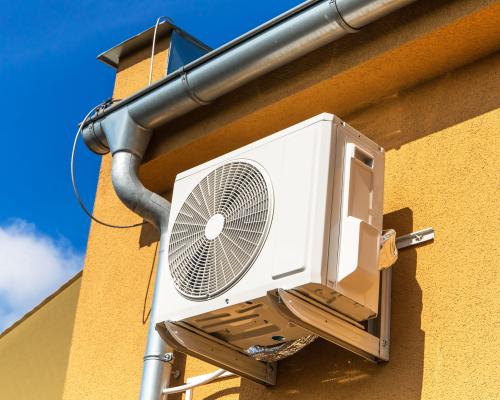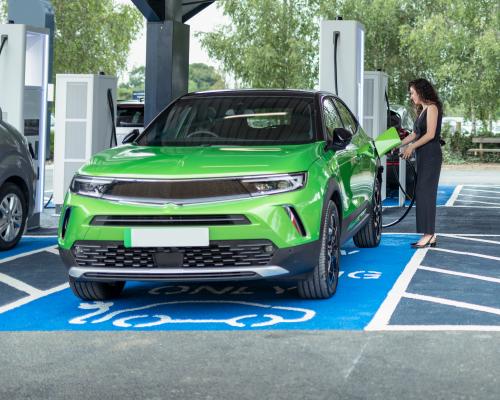
When David Tester, 56, installed a heat pump in his home in the winter of 2022, freezing temperatures descended on the country alongside a series of named storms. It was a world away from this summer’s heatwaves, which have pushed Britain to the brink of drought.
But Tester’s choice of heat pump design has meant that his three-bedroom 1930s semi in West Sussex has remained at a comfortable temperature despite Britain’s increasingly volatile weather. The air-to-air heat pump provides heating in the winter but acts like an air conditioner in the summer months.
“The heat pump has worked very well in both seasons and because I run it on electricity from my solar panels, it basically provides cooling for free,” he said.
Heat pumps remain rare in Britain, but the recent spells of hotter than average temperatures may have the unexpected consequence of boosting the government’s ambition to replace Britain’s boilers.
The government recently set out plans to include air-to-air heat pumps, which can act as air conditioners, in the same grant scheme that offers £7,500 to households that replace their gas boiler with “wet system” heat pumps.
So far, the government has prioritised promoting “hydronic” heat pumps, in large part because they make use of the existing central heating pipes and radiators, which most households currently use to warm their homes.
They work like a fridge in reverse by using electricity to capture and amplify even small amounts of heat outside a home to raise the water temperature of the central heating system. The warmed water travels through pipes and radiators to heat a home in the same way as water heated by a gas boiler.
But these are far from the most common choice in homes across Europe, according to Jan Rosenow, an academic and a programme director at the Regulatory Assistance Project (RAP), which regularly analyses heat pump systems.
“In most homes across Europe air-to-air heat pumps are the most popular option. We see the same thing in China, and the same in the US. It may seem new for UK homes, but really it is the dominant technology,” he said.
Cold comfort
In Britain air-to-air heat pumps are already beginning to roll out across public buildings, offices and shopping centres. Andrew Sissons, a deputy director at Nesta, a charity that undertakes research into home heating innovation, believes that smaller homes and flats in particular could soon benefit from combined heating and cooling too.
Air heat pumps use the same basic principles as hydronic system heat pumps, but instead of heating water that is pumped through the home, they heat the air. In the summer a refrigerant is used to provide cooling.
“Demand for air-to-air heat pumps could be significant,” Sissons said. “They provide cooling – which is more in demand as our summers get hotter – and the cost of units is far lower too. They are also relatively simple to install because they are usually wall mounted so they don’t require as much outdoor space.”
The catch? They don’t usually provide hot water, meaning a separate low-carbon solution would be needed to replace a traditional gas boiler system entirely.
In West Sussex, Tester has kept his gas boiler to heat the water used in his underfloor heating system on the first floor – but uses it sparingly for a few hours in the morning and evening during the winter months, while the air-to-air heat pump tackles the majority of the heating requirements. In summer, the pump runs on solar power to provide cooling.
Guilt-free cooling?
The promise of cooler home temperatures through Britain’s increasingly warm summers does not sit easily with many. Home air conditioning is rare in Britain, unlike in southern Europe, and there are growing concerns over the impact of cooling on the UK’s energy demand and carbon targets as the climate crisis intensifies.
The International Energy Agency has warned that growing demand for cooling could put a strain on electricity grids and climate goals. Cooling accounts for about 10% of global electricity demand today, but it is set to double by 2050 as the climate gets hotter.
The global energy watchdog noted that in 2023 one power plant in China burned about 800 tonnes of coal in just one hour to help keep Shanghai residents cool during a summer heatwave.
But British households should have no reservations about installing an air-to-air heat pump to use for cooling purposes too, according to Sissons.
There are two main reasons for this: first, the number of days when cooling would be required are far lower than the number of days when the heat pump will make significant carbon savings by providing warmth in place of a gas boiler. These carbon savings would easily outweigh the extra carbon demand from cooling a home in summer, he said, not least because the UK’s electricity grid is increasingly green.
Second, there is a strong correlation between the days when cooling will be in high demand, and the days when the UK is generating large amounts of solar power, Sissons said. Winter evenings are still likely to be the most taxing for the UK electricity system, even if there is a significant uptake in summer air conditioning in the years ahead.
These calculations already form part of the extensive forecasts produced by the National Energy System Operator to determine how much energy Britain will need in the future – and how it can meet this requirement.
The system operator’s modelling accounts for a huge increase in electricity use by the end of the decade, including demand from electric vehicles, heat pumps and data centres. It also forecasts more energy-efficient buildings and appliances combined with batteries which can provide extra electricity at times of peak demand.
The modelling shows that a virtually zero carbon electricity grid could power Britain by the end of the decade – even with growing demand – and be used by the industry and government policymakers to help the UK achieve its clean power goals.
Even so, homes can take steps to dull the effect of a surge in demand for cooling. The Energy Saving Trust recommends using passive cooling methods before fitting either an air conditioning unit or a heat pump with a cooling function to dampen the impact of higher energy demand. These include using window shades and improving ventilation to minimise the amount of energy used to cool a home.







